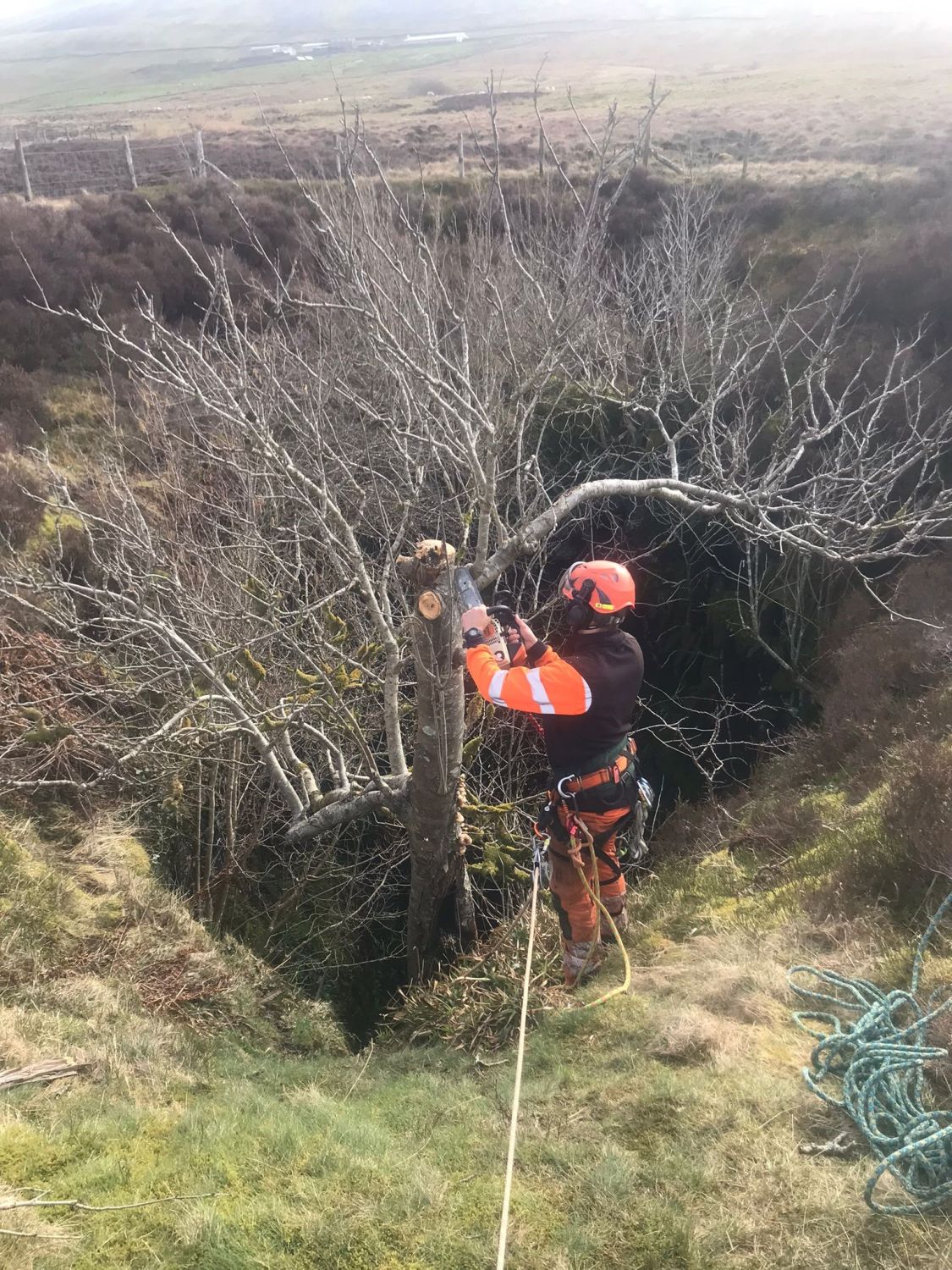s_allshorn
Active member
In terms of the instu rope, I have contacted the rope owner and they are still being used. They were last used on Wednesday, please leave them alone.

That's useful information. Thanks. These in situ ropes have been the subject of much debate on this forum, with no-one ever claiming ownership. On that basis, I have personally been on the verge of derigging them myself on more than one occasion, believing that they had been abandoned (presumably after the 3C traverse). I tried to get CNCC on board with doing this, to no avail, which is why I ultimately did not derig.In terms of the instu rope, I have contacted the rope owner and they are still being used. They were last used on Wednesday, please leave them alone.
Glad I am not the only one.There is, in fact, a steel (?) stake in the ground about a couple of metres back from the fence post (which we found by tripping over it).
But, is it too much to ask that anyone who is going to leave such popular caves rigged for a prolonged period finds some way of letting the wider caving community know that there is an ongoing project and, if possible, try to give some sort of estimate of how long it is likely to take (i.e. weeks vs months vs years)? One possible way of disseminating such information could be via this forum. Another way could be to leave a laminated note fixed near the top, which could be done completely anonymously if desired.
I believe this "stake" to be the marker for the GPS exercise Kevin Dixon undertook several years ago. I would definately NOT rely on it as an SRT back up.Glad I am not the only one.
What about reducing its size to reduce wind rock, removing dead wood, and alongside that putting in alternative belays so the tree is no longer used as an anchor?Kay the tree being condemned as a belay is hardly surprising but maybe it shouldn’t be removed/ cut down. Maybe nature should take it’s course, ultimately it’ll fall down the hole but should we speed up that process.

Pitlamp - its a Rowan tree (smooth grey bark and thick twigs)
No need to start using that language Pitlamp, let's keep it clean.Ta, in which case if someone attends and refers to it as a "Sorbus aucuparia" the experts will think they have at least some idea what they're on about! ;-)
And plant some replacements....now. Both for amenity and to stabilise the slope.What about reducing its size to reduce wind rock, removing dead wood, and alongside that putting in alternative belays so the tree is no longer used as an anchor?
Already in handAnd plant some replacements....now. Both for amenity and to stabilise the slope.

I understood the CNCC position was the only CNCC-endorsed fixed aids are resin anchors installed under the BCA scheme. Has this position changed?Over the last few weeks, ... two ground-spike anchors installed to provide alternative surface belays. .... The topo has been updated this evening.
The only fixed aids that the Council of Northern Caving Clubs currently supports are stainless steel resin anchors which have been installed by trained installers in accordance with the British Caving Association’s anchor scheme.
...
The CNCC does not support, maintain or endorse use of any other kinds of fixed aids in caves.
The CNCC does not install or maintain any fixed aids in caves other than the resin anchors shown on the topos
After considerable discussion amongst the CNCC anchor installers team, with lots of excellent input, the decision was made to manufacture and install ground spike belays.
On 7th April, a bright sunny day, a CNCC team including our Training Officer/Anchor Installer, Ian Patrick, headed up to Death’s Head hole armed with two 38mm diameter, 1.3m long galvanised steel tubes with thick wall with pre-cut spike end, plus anchor installation equipment and an assortment of rigging kit and other tools.Photo 3: Ground anchor bars cut to a spike on one end, ready to be installed (photo by Ian Patrick).
Despite best efforts, Ian was not able to install any stainless steel resin bonded anchors within the shakehole. The ground was too loose. However, he was able to get one extra anchor into the gully about 1.5m above the top of the existing first pitch anchor, to serve as a rebelay part way down the gully. The existing single anchor on the start of the first pitch was supplemented by a second to convert this into a Y-hang to minimise fall factors.
In summary, the Death’s Head Hole rigging now comprises a Y-hang from two scaffold ground spikes just outside the fence, a rebelay/traverse anchor in the gully, and then 1.5m lower is a Y-hang for the first proper pitch. The rigging topo has been updated accordingly, although the rope length is unchanged (80m)
The hollow tree trunk is still present, but we recommend that this is not used for rigging.
Cavers are reminded that, unlike our stainless steel resin bonded anchors, these ground spike belays do not carry years of evidence for their longevity. It is essential that all cavers must inspect and be satisfied in the integrity of the ground spikes before using them; the same of course being true for all anchors! Report any issues you observe.
